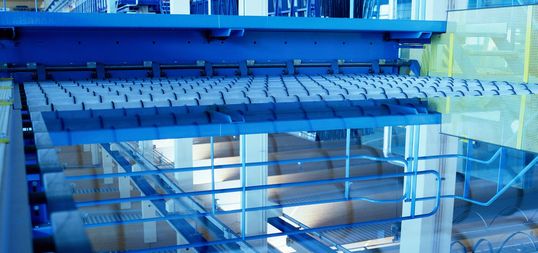Coating technology, in the form of glazes, is one of the most ancient achievements of civilization. Today it is impossible to imagine daily life without decorative protective coatings or hard coatings. The deposition and removal of thin layers also plays a central role in the manufacture of microelectronic components. Modern coatings are predominantly applied in vacuum processes, either using physical vapor deposition (PVD) or chemical vapor deposition (CVD). The coating requires excitation of a suitable starting material. This can be done by thermal heating, e.g. evaporation. However, a variety of applications require electrical gas discharge or plasma for excitation. To generate these requires appropriate power supplies. The most important plasma coating processes are plasma-enhanced chemical vapor deposition (PECVD) and magnetron sputtering. A challenging variant of the latter is reactive sputtering to produce dielectric insulating protective layers. The high power impulse sputtering (HiPIMS) process also opens up new application options.
Plasma coating
Sputtering - especially magnetron sputtering - is quantitatively the most important method of industrial plasma coating. Sputtering technology is based on the phenomenon of cathode sputtering, a fundamental phenomenon in electrically excited plasmas: the positive ion current in the plasma hits the cathode and sputters out material. A magnetron is commonly used as the cathode, which concentrates the plasma in front of the cathode and thus enables maximum sputtering and coating rates on the substrate. Since the substrate is also exposed to a degree of energetic influence from the ions, magnetron sputtering can achieve very dense and fine-grained layers in contrast to thermal evaporation. For sputtering, conductive targets (material storage on the cathode) are usually used. Metals and conductive ceramics are particularly suitable for this purpose. These can be sputtered in a noble gas so that the composition of the layer corresponds to the target. In reactive sputtering, insulating oxides and nitrides are also coated by adding oxygen or nitrogen as reactive gases. These have many applications as dielectric transparent protection layers. For single target sputtering, DC generators are used which can also be operated in pulsed mode according to the process. Dual magnetron sputtering is generally used for sputtering insulating layers. With an alternating current supply, two magnetrons are operated alternately against each other so that insulating layers are not deposited on the anode. Special generators used here are MF and bipolar generators. In plasma sputtering, local electric arcs are often ignited in the glow discharge. Generators for sputtering processes must be equipped with a suitable arc management device.
High power impulse sputtering, known as HiPIMS (high impulse magnetron sputtering), is gaining increasing interest in the production of hard coatings and wear protection coatings due to the particularly high demands on coating quality required here. Special pulse power supplies are then needed that deliver their power in very short and high-energy pulses with a typical duration below 100µs and a repetition rate in the 100 Hz range. HiPIMS generators need to provide not only the pulsing mode but also meet the requirements of all plasma power supplies: precise output control adapted to the process and high-speed arc management.
Chemical vapor deposition, also known as CVD technology, applies extremely thin layers to materials of widely differing qualities. A solid coating material is produced thermally from gaseous substances. The coating is deposited on the substrate as a crystalline or amorphous layer. In conventional thermal coating, the assist gas splits into its reaction products only at the heated substrate surface. In plasma-enhanced chemical vapor deposition (PECVD), this reaction already takes place in the gas phase through electrical ionization. Much lower temperatures are a major advantage of PECVD, because only then can temperature-sensitive substrate materials such as plastics be used. PECVD is therefore a versatile process in the production of microelectronic components, flat panel displays, solar modules, and optical components. Metallic, semi-conducting, or insulating layers can be applied. Complex layer systems are also possible.
White paper
We have compiled white papers with interesting topics for you
Products

MF plasma excitation from TRUMPF Hüttinger is mainly used in dual-cathode systems, for example for dual magnetron sputtering.

DC pulsed plasma excitation from TRUMPF Hüttinger is ideal for use in numerous reactive processes.

Direct current generators from TRUMPF Hüttinger are classics when it comes to DC plasma excitation.

TruPlasma RF generators from TRUMPF Hüttinger offer the highest process stability of all power supplies for plasma excitation applications.


